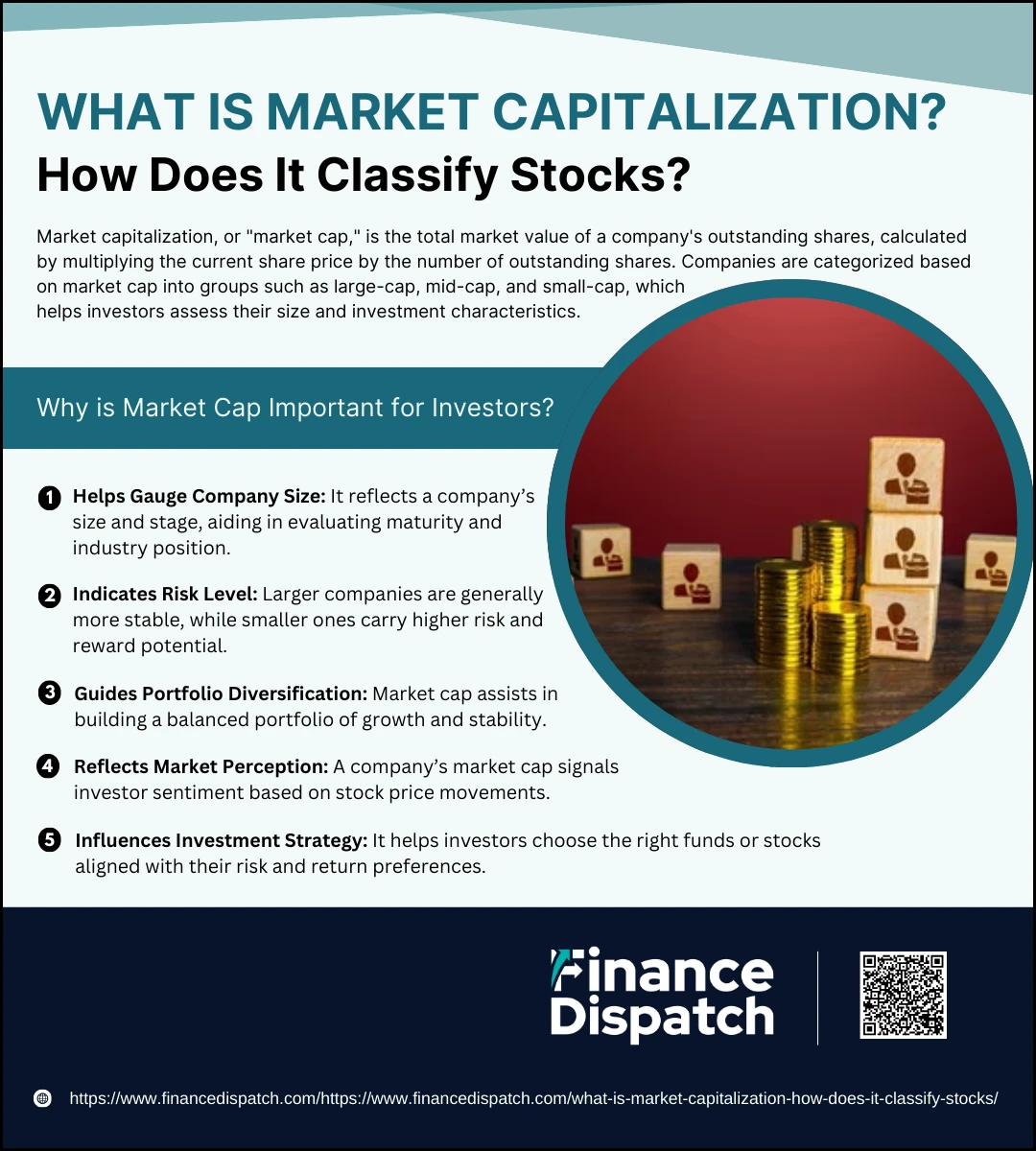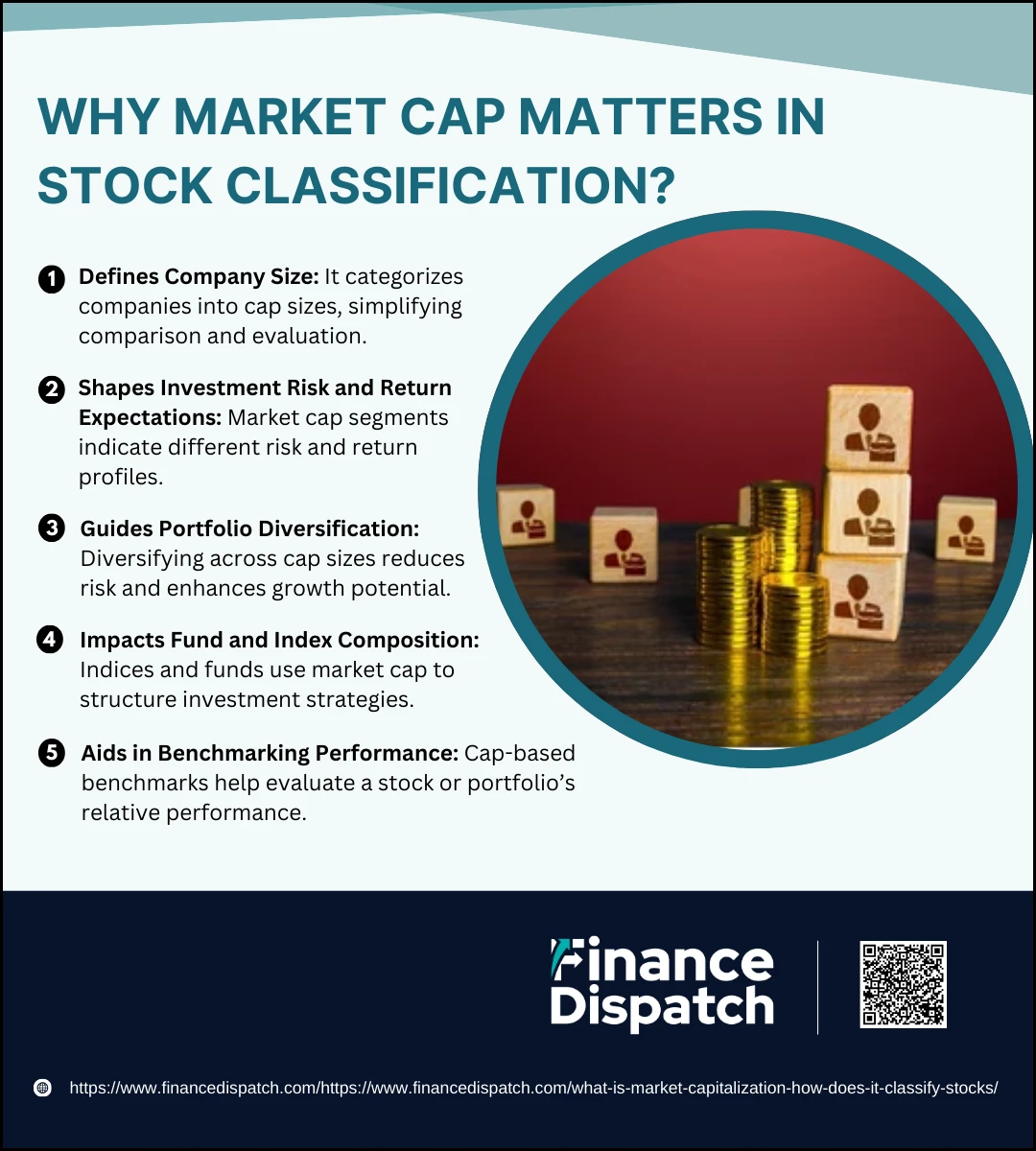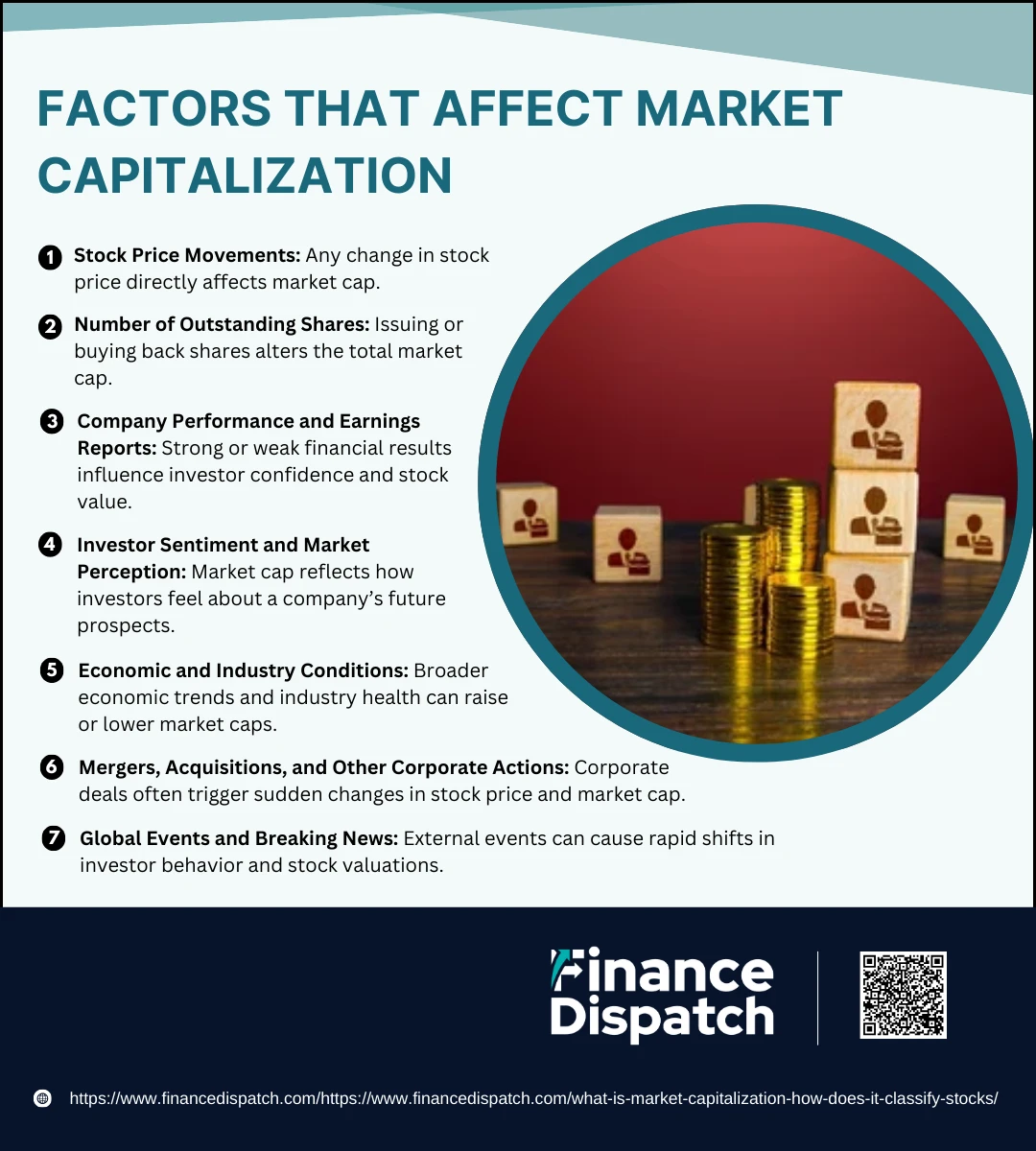In the world of investing, understanding the size of a company is just as important as knowing what it does. One of the simplest yet most powerful ways to gauge a company’s size is through market capitalization, or market cap. This metric reflects the total value of a company’s outstanding shares and helps investors compare companies across different industries. Whether you’re looking at global giants like Apple or Microsoft with valuations in the trillions, or up-and-coming firms with room to grow, market capitalization provides a quick snapshot of a company’s market worth. More importantly, it plays a crucial role in classifying stocks into categories like large-cap, mid-cap, and small-cap—each carrying its own level of risk and return.
What is Market Capitalization?
Market capitalization, often referred to as market cap, is the total value of a publicly traded company’s outstanding shares of stock. It’s calculated by multiplying the current share price by the total number of outstanding shares. For example, if a company has 10 million shares and each is priced at $50, the market cap would be $500 million. This simple formula offers a clear picture of a company’s overall value as perceived by the stock market. Unlike other metrics that might focus on sales or profits, market cap reflects what investors are willing to pay for ownership, making it a fundamental tool for comparing companies of different sizes and evaluating potential investment opportunities.
 Why is Market Cap Important for Investors?
Why is Market Cap Important for Investors?
Market capitalization plays a crucial role in shaping investment decisions. It not only reflects the market’s valuation of a company but also signals how stable or risky an investment might be. Whether you’re a conservative investor looking for steady returns or a risk-taker chasing growth, understanding market cap helps you align your investment choices with your financial goals and risk tolerance.
Here’s why market cap matters to investors:
1. Helps Gauge Company Size
Market cap allows investors to quickly assess a company’s size, which often correlates with its maturity and position in the industry. Large-cap companies are typically well-established with stable operations, while small-caps may be newer firms with room to grow.
2. Indicates Risk Level
The size of a company often reflects its ability to withstand economic shifts. Larger companies usually have more diversified revenue streams and stronger financial reserves, making them less volatile. Smaller companies, though riskier, can offer higher returns if they succeed.
3. Guides Portfolio Diversification
A well-diversified portfolio typically includes a mix of large-, mid-, and small-cap stocks. Market cap helps investors balance stability with growth potential, reducing overall risk while pursuing long-term gains.
4. Reflects Market Perception
Since market cap is influenced by stock price, it serves as a real-time indicator of investor confidence. A rising market cap often suggests positive sentiment about a company’s future, while a declining cap may point to concerns.
5. Influences Investment Strategy
Many mutual funds and ETFs are structured around market cap segments. For instance, large-cap funds may be preferred for steady income through dividends, while small-cap funds target aggressive growth. Knowing a stock’s market cap helps investors select the right vehicle for their objectives.
 Why Market Cap Matters in Stock Classification
Why Market Cap Matters in Stock Classification
When analyzing or comparing companies in the stock market, one of the most important factors investors look at is market capitalization. It provides a quick and reliable way to classify stocks based on the company’s size and perceived market value. These classifications—such as large-cap, mid-cap, and small-cap—not only help investors understand the scale of a business but also guide them in building a diversified and risk-adjusted investment portfolio.
Here’s how market cap plays a key role in stock classification:
1. Defines Company Size
Market cap determines whether a company is categorized as large-cap, mid-cap, small-cap, micro-cap, or nano-cap. This classification helps investors assess the maturity and scale of a business, making it easier to compare companies across sectors.
2. Shapes Investment Risk and Return Expectations
Large-cap stocks are often more stable and carry lower risk, while small- and micro-cap stocks may offer higher growth potential with increased volatility. Market cap classification allows investors to choose stocks based on their individual risk tolerance.
3. Guides Portfolio Diversification
By using market cap categories, investors can structure their portfolios to include a healthy mix of growth and stability. Diversifying across different cap sizes spreads out risk and increases the potential for long-term returns.
4. Impacts Fund and Index Composition
Many stock indices, such as the S&P 500 or Russell 2000, are built using market cap classifications. Mutual funds and ETFs also use these classifications to build strategies focused on specific segments of the market.
5. Aids in Benchmarking Performance
Investors often compare a stock’s or portfolio’s performance with market cap-based benchmarks. This helps evaluate whether a portfolio is outperforming or underperforming relative to its size-based peer group.
How Market Capitalization Classifies Stocks
Market capitalization serves as the foundation for categorizing companies into various stock classes based on their overall value in the market. This classification helps investors evaluate which stocks might offer stability, growth potential, or higher risk. By grouping companies according to their market cap—such as large-cap, mid-cap, and small-cap—investors can make better-informed decisions tailored to their financial goals and risk appetite.
Below is a table that outlines the main stock classifications based on market capitalization:
| Category | Market Cap Range | Key Traits |
| Mega Cap | $200 billion and above | Industry leaders, highly stable, often global brands |
| Large Cap | $10 billion – $200 billion | Established companies, steady growth, often pay dividends |
| Mid Cap | $2 billion – $10 billion | Growing firms, balance of stability and growth potential |
| Small Cap | $300 million – $2 billion | Emerging businesses, higher risk, high growth opportunity |
| Micro Cap | $50 million – $300 million | Often penny stocks, low liquidity, very high risk |
| Nano Cap | Below $50 million | Extremely speculative, low trading volume, highest risk of all |
 Factors That Affect Market Capitalization
Factors That Affect Market Capitalization
Market capitalization is a dynamic measurement that fluctuates as a company’s value changes in the eyes of investors. Though its calculation is straightforward—multiplying a company’s share price by its total outstanding shares—the inputs to this formula are constantly influenced by market forces, corporate decisions, and external events. Understanding these influences can help investors anticipate movements in market cap and evaluate whether such changes reflect real value or short-term noise.
Here are the key factors that can affect a company’s market capitalization:
1. Stock Price Movements
Since market capitalization is directly tied to the share price, any movement in stock value—whether from earnings announcements, news coverage, or investor behavior—can lead to significant shifts in market cap. A price surge boosts the company’s perceived market value, while a drop shrinks it.
2. Number of Outstanding Shares
Market cap also changes when the total number of shares available on the market changes. If a company issues more shares (e.g., through a secondary offering), the market cap can increase, assuming the price remains stable. On the other hand, share buybacks reduce the number of shares and may lead to a higher share price, potentially increasing the market cap further.
3. Company Performance and Earnings Reports
Consistent revenue growth, profitability, or a strong quarterly earnings report can improve investor confidence, driving up the stock price and consequently the market cap. Conversely, weak results or declining margins can negatively impact valuation.
4. Investor Sentiment and Market Perception
Market cap often reflects how investors feel about a company’s future—not just its current performance. Speculation, media coverage, hype around innovation, or endorsements from influential analysts can all influence buying and selling behavior, impacting share price and therefore market cap.
5. Economic and Industry Conditions
Macro-level factors like interest rates, inflation, GDP growth, and unemployment affect investor sentiment and stock valuations across entire industries. A strong economy might lift most companies’ stock prices, raising their market caps, while downturns usually have the opposite effect.
6. Mergers, Acquisitions, and Other Corporate Actions
Announcements of mergers and acquisitions can instantly impact stock prices. For example, if a company announces it’s being acquired at a premium, its stock price often jumps, increasing its market cap. Conversely, if a merger is expected to dilute earnings or create uncertainty, the stock price might fall.
7. Global Events and Breaking News
World events—like political instability, trade wars, natural disasters, pandemics, or regulatory changes—can send shockwaves through markets. Companies in affected regions or industries may experience volatility that alters their stock price and, by extension, their market cap.
How to Calculate Market Capitalization
Calculating market capitalization is a simple yet essential step in evaluating a company’s size and value in the stock market. It gives investors a quick snapshot of what the market believes a company is worth at any given time. The calculation itself is straightforward and relies on two easily accessible figures: the company’s current share price and the total number of outstanding shares.
Here’s how to calculate market capitalization:
1. Find the Current Share Price
Look up the current trading price of one share of the company’s stock on any financial news platform or stock exchange.
2. Determine the Total Number of Outstanding Shares
This includes all shares held by investors, including institutional holdings and insider ownership. You can usually find this number in the company’s financial statements or stock profile.
3. Multiply Share Price by Outstanding Shares
Use the formula:
Market Capitalization = Share Price × Total Outstanding Shares
For example, if a company’s stock is trading at $50 and it has 10 million shares outstanding, its market cap would be $500 million.
4. Recalculate as Needed
Because stock prices fluctuate throughout the trading day, a company’s market cap can change in real time. It’s helpful to recalculate if you need the most up-to-date valuation.
Market Cap vs. Other Classification Methods
While market capitalization is one of the most commonly used ways to classify companies, it’s not the only method investors rely on. Other classification metrics—such as revenue, net income, industry sector, and enterprise value—offer different perspectives on a company’s financial health, operations, and growth potential. Each approach has its strengths and is often used in combination to get a more complete picture of a company’s worth and investment appeal.
Here’s a comparison of market cap with other common classification methods:
| Classification Method | What It Measures | Key Use Case | Limitations |
| Market Capitalization | Total value of outstanding shares | Quick estimate of company size and investor sentiment | Doesn’t account for debt or actual company assets |
| Revenue | Total income from sales | Indicates business scale and demand | Doesn’t reflect costs, debt, or profit margins |
| Net Income | Profit after expenses and taxes | Measures company profitability | Can be manipulated through accounting practices |
| Enterprise Value (EV) | Market cap + debt – cash | Reflects total company value (especially for acquisitions) | More complex to calculate, harder to compare at a glance |
| Book Value | Total assets – total liabilities | Useful for value investing | May undervalue companies with intangible assets |
| Sector or Industry | Grouping by business activity | Helps compare operational peers | Doesn’t reveal financial size or strength |
Misconceptions about Market Capitalization
Market capitalization is a widely used metric to evaluate a company’s size and market value, but it’s often misunderstood or misused by investors—especially beginners. While market cap is helpful in many ways, relying solely on it can lead to inaccurate assumptions about a company’s true value, performance, or potential. To make informed investment decisions, it’s important to clear up some common misconceptions.
Here are some of the most frequent misunderstandings about market capitalization:
1. A High Share Price Means a Large Company
Many assume that a stock trading at $1,000 per share is larger than one trading at $100—but size is determined by market cap, not share price alone.
2. Market Cap Equals Company Worth
Market capitalization reflects only the market’s valuation of equity, not the company’s total value. It doesn’t account for debt, assets, or liabilities.
3. Market Cap Is a Fixed Number
Market cap changes constantly as stock prices fluctuate. It’s not a permanent figure and can shift dramatically in response to market trends or company performance.
4. All Large-Cap Companies Are Safe Investments
While large-cap firms are generally more stable, they are not immune to risk. Economic downturns, scandals, or poor management can still impact their stock prices.
5. Small-Cap Stocks Are Always Risky or Unstable
Although small-cap companies tend to be more volatile, many are innovative firms with strong growth potential and solid business models.
6. Market Cap Determines Stock Price
It’s actually the other way around—market cap is calculated using the stock price and the number of shares outstanding, not the other way around.
7. Market Cap Accounts for All Financial Metrics
Market capitalization doesn’t include important financial details like earnings, cash flow, or return on equity. It should be used alongside other metrics for a full analysis.
Conclusion
Market capitalization is a fundamental concept in the world of investing, offering a quick snapshot of a company’s size and market value. It plays a critical role in classifying stocks, guiding portfolio decisions, and evaluating risk and growth potential. However, while it is a useful tool, market cap should not be viewed in isolation. To make well-informed investment choices, it’s important to understand what market capitalization does—and does not—reveal about a company. By combining market cap with other financial indicators and staying aware of common misconceptions, investors can build smarter, more diversified portfolios that align with their financial goals.



